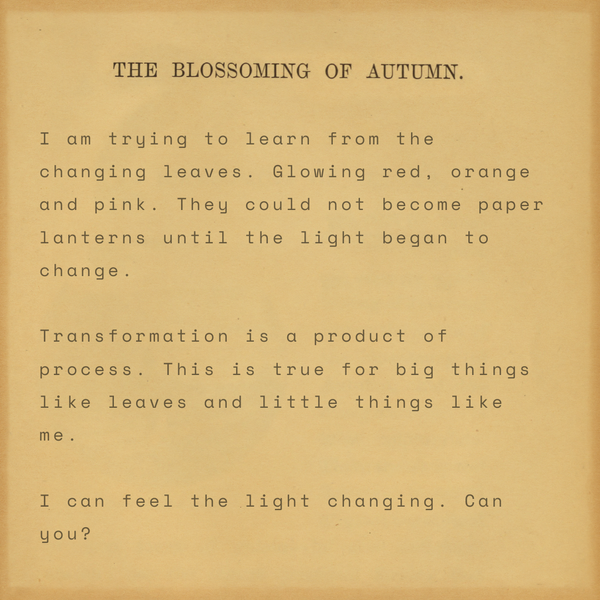I finished my miscarriage on a toilet
We don't talk about what happens in women's bodies or bathrooms.

Content Warning: In this essay, I discuss miscarriage.
To read more about reproductive healthcare, head to the pocket observatory abortion primer.
Not so long ago, talking about pregnancy was considered indelicate. Acknowledging a woman was pregnant meant accepting a woman had sex to become pregnant and, well...heaven forbid.
We talk a little more openly about sex and pregnancy now. But there is still too much silence about the thing that often comes after the positive pregnancy test - miscarriage. Our culture has never been comfortable talking about women and death, women and blood, women and any outcome outside of a live birth.
I didn’t fully recognize what the silence kept from me until I lost a pregnancy myself. I was completely unprepared, and unsupported, as I breathed through the gore, the pain, and the isolation.
The thing that surprised me the most about my miscarriage is perhaps the thing that should have been the most obvious about it. It was a work of loneliness. I didn’t get pregnant alone, but I miscarried alone.
Miscarriage, like birth, is a solitary labor, done by so many. A miscarriage seeps into the car while a woman is picking up her other children from school. It drips into the first half of an important meeting. It blooms in the middle of the night.
Sometimes, a miscarriage starts during a long shift at a restaurant.
An expectant mother carries plates of eggs and bacon to Table Three. She’s had to retie her apron; it’s feeling tight for the first time as her stomach expands. As she sets the plates down, she feels the slightest wetness between her legs. Or does she? Maybe she’s imagining it. Sure, I’ll bring over more coffee, just one minute.
She waits for a slow moment to duck into the bathroom. Her underwear is spotted with blood. She may have to finish her shift before going to the doctor. She may not go to the doctor at all. She knows they will not help her. The spots turn to drips and the drips turn to gushes.
She may go home to bleed out the fetal tissue and placenta. A lot of her bleeding will take place on the toilet, with clots and tissues so big they splash water back up onto her. When the bleeding is over, she’ll return to work. Or, more likely, she’ll bleed while she works. It will be a week or two or three before her apron no longer feels tight.
Women often go through miscarriages without care from their community because they haven’t yet announced the pregnancy. The personal and professional costs of pregnancy are real. Many women decide to make sure the pregnancy is sticking before having to pay the social price of being a pregnant woman.
My third pregnancy, the one I miscarried, I told people I was pregnant as soon as I knew. Most of them expressed some concern, Are you sure you should be telling people already? What if it doesn’t work out? I didn’t understand what they meant. Even if the pregnancy ended, that didn’t mean it didn’t work out. It just worked out differently than I’d hoped.
Since miscarriage usually happens sometime between conception and the twelfth week of pregnancy, most women miscarry at home. It’s not a process that generally needs medical intervention. When it does, usually, a pill or two will help it along. Women pick up the pills at the pharmacy and swallow them at home.
I’d started my miscarriage in bed, waking up to it and the sound of my children’s voices. I carried it with me for days, bleeding in cars and on couches and while I made the kids lunch.
I didn’t need the drugs. Just an appointment to verify I was miscarrying. The blood pooled beneath me as I got the ultrasound. The fetus had stopped growing. I was sent home to let the miscarriage finish itself.
I finished my miscarriage on the toilet. Is this one of the reasons we don’t talk about miscarriages? Because so many of them are accomplished in the bathroom?
Our culture is only willing to talk about women doing their hair and makeup in the bathroom. But other things happen there, too, including the loss of pregnancies women have hoped for, feared, or felt ambivalence toward. Even unwanted pregnancies exact a physical toll as they are expelled from our bodies.
I wanted someone trained in miscarriage care to come and brush the hair from my eyes as I miscarried in my bathroom. In my country, insurance rarely pays for a midwife for at-home birth. Of course, we haven’t figured out a co-pay for a doula for death. We should. Miscarriage was incredibly frightening.
The pain felt like a late stage of labor. It felt this way because that’s what it was. In America, the labor that produces living children is exploited for profit. The labor that expels embryos and fetuses is not considered productive, so the healthcare system doesn’t even bother to exploit it.
My miscarriage hurt. I didn’t moan while I gave birth to my three living daughters. I moaned while I miscarried.
When I had my first child, there was so much blood, a nurse knelt to clean up the floor around the hospital bed while I labored. When I miscarried, there was so much blood, I knelt to clean up the tile around the toilet while I labored.
It felt like more than my uterus was being emptied. Sometimes, a clot fell out that was so big, so solid; it seemed made up of some of the tissue of my heart, my lungs, and my stomach.
I cried, and red smeared across my cheek when I wiped my face. I thought briefly about climbing into the bath, so the contents of my uterus and everything they represented wouldn’t fall into the toilet. But what then? I’d just need to scoop up the tissue and clots and put it into the toilet.
I washed my hands and face and sat down on the toilet again. As I wept and contracted, I could feel my body working. I wondered,
Why do we call this a miscarriage?
A miscarriage occurs when a set of predetermined rules has not been followed. But as unwanted as that miscarriage was, I could feel my body doing what it was supposed to do when confronted with an impossibility. I wasn’t miscarrying; I was functioning.
I lived in the Bay Area, surrounded by tech campus temples built for algorithms - sequences of instructions meant to solve a problem. My body could sense something in the code of my embryo wasn’t quite right and knew what sequence to follow. Why weren’t we building temples to honor that operation? Or at least accessible healthcare clinics?
A final tearing contraction pushed tissue, blood, water, and a fetus out of me. Shaking, sweaty, and sticky, I cleaned myself up before I looked in the toilet. I allowed myself one horrified gasping glance, and then I flushed.
It was odd, applying lipstick in front of the bathroom mirror, a few days after it’s been the only witness to my loss. Odder still, to use the toilet, or help my children use the toilet, when I remembered what I’d flushed down it just a few days earlier. But I’d grown used to this kind of tension in the home, and so I faced the mirror, and the toilet, and the day, and the day after that.
Miscarriage is messy and productive, like many things in the home. And like many things in the home, it’s been culturally isolated. Miscarriage is not allowed to bleed into the rest of our lives. There is no support for the miscarrying woman in our legal codes or our cultural customs.
We’ve gotten a bit more comfortable with women having sex and a little more comfortable with them being pregnant. But we still cannot bear to witness them when their bodies have worked and, in the working, flushed out death.
Many miscarriages flush out hope as well as death. In the essay Goodbye, Baby, I wrote about what my miscarriage did to me.
We send women home from the hospital after the loss of children to stillbirth and too early birth. They bleed at home, too. I imagine most of them clean the blood off their bathroom tiles themselves. Even after they’re done bleeding, they receive pregnancy ads from tech companies who track their early pregnancy through Google searches about the “best cribs” and baby clothes. Read this heart-aching article from Gillian Brockell about continuing to be exploited by tech company ads after the stillbirth of her son.




